When and how to plant cucumbers for seedlings?
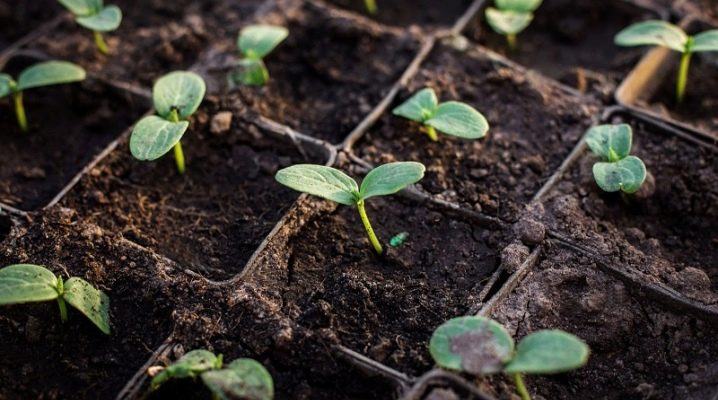
The owner of even a small plot of land grows cucumbers and tomatoes without fail. There is no salad tastier than vegetables harvested in your own garden. This article will focus on cucumbers.
In order to get the first harvest as early as possible, you should take care of this from winter. Prepare the soil, grow seedlings, and plant them in open ground in May. While the neighbors in the garden will "wake up" the seeds, your seedlings will already grow.
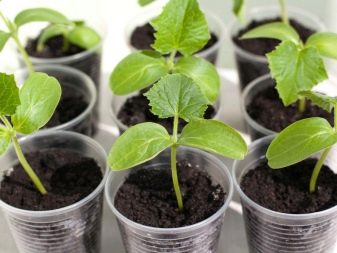
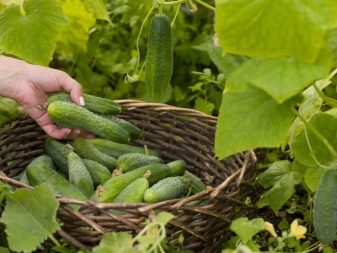
Timing
Cucumbers are thermophilic plants. Despite the presence of cold-resistant varieties bred by breeders for growing crops in Siberia and the Urals, vegetables begin to grow in already warmed up warm soil. The timing of planting seedlings depends on the date of its transfer to open ground. Sowing seeds should start a month and a half before this event. The more specific time is determined by the weather conditions that are typical for the climate of each region. For example, if in your area cucumbers are planted in the ground at the beginning of May, then you need to sow seedlings before the first days of April.
Favorable conditions for sowing seedlings in the garden are considered to be the period when the air temperature is kept at least +15 degrees during the day and +8 degrees at night. Some gardeners plant crops according to the lunar calendar, they are convinced that the phases of the natural satellite of the Earth affect the growth of plants. No wonder our ancestors planted cucumbers on Radonitsa, it is tied to Easter, and, as you know, the date of the holiday is calculated not without the participation of the Moon. Consider the planting period for cucumbers by region.
- Middle zone of Russia (from Tver to Voronezh region, Moscow region). Seedlings are sown on the windowsill in mid-April, transplanted outside at the end of May.
- Leningrad region. Due to the specifics of the climate, humid summer and lack of sunny days, seedlings are more often planted for further cultivation of cucumbers in a greenhouse, preference is given to zoned varieties. For greenhouse cultivation, sowing is carried out from April 1 to 10, for open ground - after April 25.
- Ural and Siberia. For a short and hot summer, cucumbers have time to grow. But they should be planted in open ground no earlier than mid-June. Accordingly, it is necessary to sow seeds for seedlings in the first decade of May. Planting material is transplanted into greenhouses by May 15, which means that seedlings for greenhouse cultivation are sown before April 15.
- Southern regions (Kuban, North Caucasus). In the southernmost regions of the country, seedlings are sown from February to March, and planted in open ground in April. From June 1 to June 15, you can start seedlings again for a second, late harvest. She should get to the garden no later than July 15, then the cucumbers will ripen from August to October.
When dealing with seedlings, it should be borne in mind that the variety of the plant affects the germination and growth rate - the early varieties develop faster, the later ones - more slowly.


Preparation
Future yield directly depends on seed quality and soil composition... Only patience and good care can be added to this. Cucumbers have good germination, seeds do not lose their vitality up to 7 years. After sowing, the first shoots may appear already on the 4th day, if the air temperature does not drop below +20 degrees.
Seeds
From small, low-quality seed material that has not undergone full preparation before planting, the same weak bushes with a small number of fruits grow.If you sow seeds taking into account agricultural technologies, high results can be expected from seedlings. Seed preparation is carried out in compliance with the following steps.
Calibration
You should not waste time and energy on germinating low-quality seeds, from which weak, not viable sprouts may appear, it is better to calibrate them right away. The selection of planting material is carried out using salted water. It is necessary to prepare a solution (0.5 tablespoons of salt in a glass of liquid) and place cucumber seeds in it.
5 minutes is enough for empty and weak seeds to float, they must be removed. Dry the remaining seeds, see that there are no moldy, fungus-stuck specimens. Factory seed, in contrast to counterfeit handicraft products, goes on sale already calibrated.
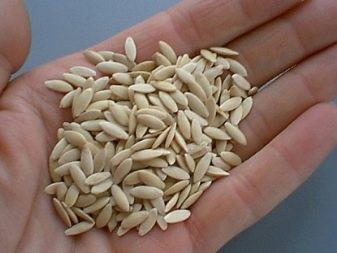
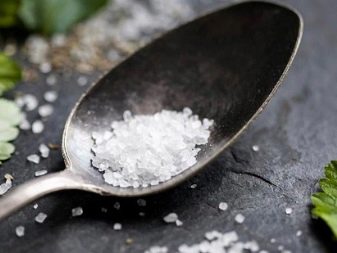
Warming up
The sorted seeds can be kept in a warm place for some time, for example, on a radiator, so that the number of female ovaries increases.
Disinfection
This is an important step in the preparation of seed material, it helps not to run diseases into the garden and grow a healthy crop. Seeds treated with antifungal and antibacterial compounds get rid of pathogenic microorganisms. To carry out the disinfection procedure, the seeds should be laid between layers of gauze or placed in a canvas bag, filled with a solution:
- potassium permanganate - leave for 30 minutes, then rinse and dry;
- "Fitosporin-M" - dilute 1.5 g of the substance in 1 liter of water, disinfect for two hours.
The commercial seed material that is being marketed has already been germicidal and is ready to be planted.
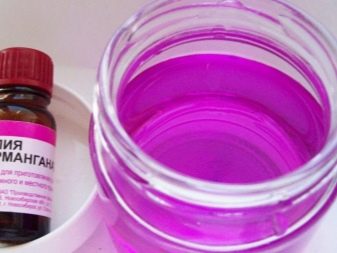
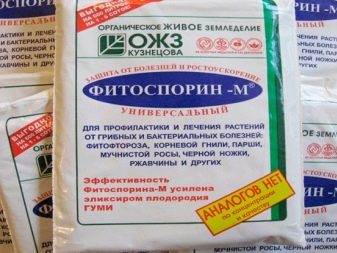
Germination
Thanks to the germination technology, the seeds are actively developing. They turn to this method if they want to increase the germination of seedlings and accelerate the process of plant development in the future. The following steps will help the seeds hatch.
- Fold a piece of gauze in several layers, place on the bottom of the plate.
- Place the seeds in one row on the fabric.
- Fill with water so that the seeds are barely covered. In a large amount of water, they will die, but they will not open at all without moisture. Therefore, you need to ensure that the gauze is always moistened.
- The liquid evaporates more slowly, and a greenhouse effect is created if a plate with planting material is placed in a cellophane bag.
- For germination, seeds should be removed to a dark, warm place (more than +20 degrees).
- After 2-4 days, the planting material will hatch. It is necessary to remove the "not awakened" seeds, they will no longer be useful, and plant the rest on seedlings.
Sometimes growth stimulants are added to the water - diluted aloe juice, ash, or the drug "Zircon".

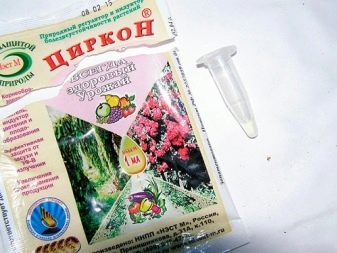
Hardening
Temper the seeds in a cold place. To do this, lay them in layers in wet gauze, and put the container in the refrigerator for a day. Seedlings intended for greenhouse cultivation of cucumbers do not need to be disinfected and tempered.
The soil
Cucumbers are unpretentious, but they still give preference to light soil, with neutral acidity, with good penetration of water and air to the roots of the plant. Soil with this composition can be purchased in specialized stores. However, many vegetable growers love to make soil mixtures on their own. To do this, they prepare the following composition:
- ordinary soil from the garden - 2 parts;
- compost - 2 parts;
- peat - 1 part;
- sand, sawdust or vermiculite - 1 part.
50 g of azophoska and some wood ash are placed in a bucket with the prepared composition. Stir everything well. A week before sowing seeds, the soil is disinfected with a solution of copper sulfate or manganese. To get rid of insect larvae, some gardeners heat the soil in the oven.
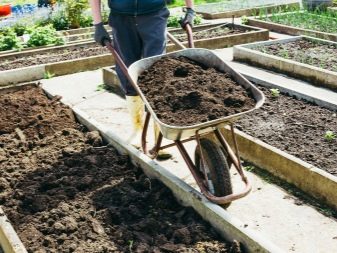

Where to plant seedlings?
You can sow green seeds in a regular flower pot with a wide planting area. But delicate roots of cucumber seedlings break easily during a dive.... Therefore, they try to transplant the plants together with a lump of earth, which requires an individual cup for each sprout.... It is even more convenient to choose containers that themselves dissolve in the soil over time. The industry produces a large number of devices to help vegetable growers, they can always be found on the shelves of specialized outlets.
Plastic cassettes
They are containers made of thin plastic with small cells. 1-2 plants are planted in each nest. There can be up to 50 of them on one cassette. When it comes time to transplant the seedlings into the ground, the nest is cut with scissors and the sprout is carefully removed along with a lump of earth.
Some cassette models are complemented with a water tray or lid to create a greenhouse effect.
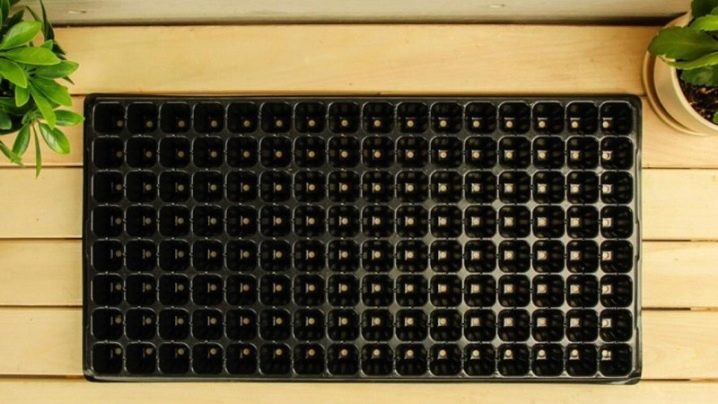
Plastic reusable seedling kits
Planting cup kits are made from durable plastic. They are reusable. Thanks to the removable bottom, the plant easily leaves the containers along with a clod of earth. After planting the seedlings in the ground, the cups are washed and sent for storage until next year.
The kit has a tray with fixed stops to keep the containers in place.
The disadvantages of such kits include the frequent loss of bottoms - soiled with earth and set aside during planting, they become invisible and are often forgotten in the beds.
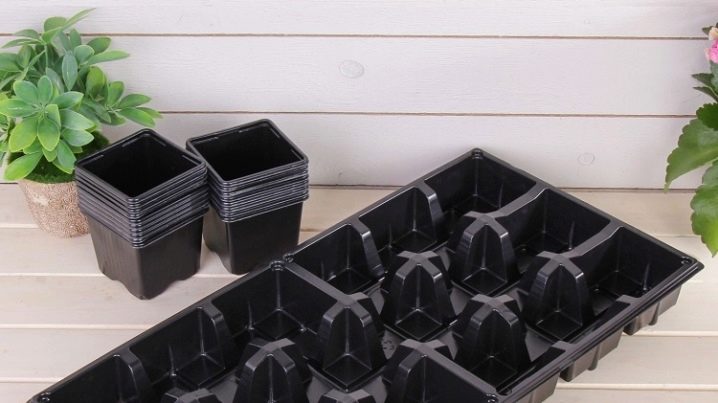
Peat pots
It is an excellent organic material for seedlings. During planting, the plant does not need to be removed from the container, it is planted with the pot. Peat, splitting over time in the open field, becomes a good breeding ground for cucumbers. The disadvantage of the containers is the porosity of the peat, due to which moisture from the soil in the cups quickly evaporates. To avoid this, you need to place the seedlings in trays with water.
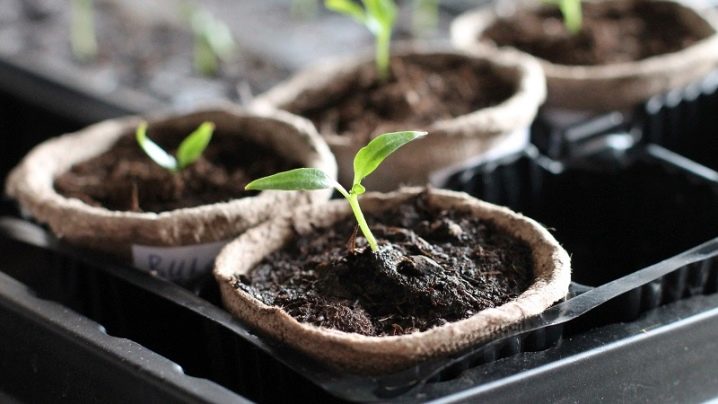
Peat tablets
They are a balanced nutrient substrate in the form of tablets, which contains everything necessary for the development and growth of seedlings. It remains only to make a depression and place the seeds in it. Seedlings should be watered periodically, avoiding drying out and shrinking of the material. Unfortunately, small volumes do not allow the sprout to grow and get stronger. They are suitable for warm, humid regions where even small seedlings transplanted into open ground develop quite quickly.
Many summer residents have their own view of the appearance and origin of seedling containers. Their imagination allows them to sow seeds at home in unusual containers.
- By using eggshells together with a tray, the inventor of this method gains several advantages at once. The shell is securely fixed in the cells of the tray, the plant receives calcium as a nutrient fertilizer. When transplanting, it is easy to break the shell and plant seedlings with an earthen clod, and crush the shell in the garden as top dressing.
- When sowing seeds in plastic bags, you can cover them at first. The result is a greenhouse effect, which creates a special microclimate inside the bag. When the first leaf appears, the packages are opened. When planting plants in open ground, there is nothing easier than removing the sprout along with the soil and replanting it.
- Plant seedlings in disposable plastic cups intended for drinks, - a classic of the genre, many summer residents do just that. You just need to make holes in the bottom of the glass and put the seedlings on the pallet.
With the same success, all kinds of food containers of small volume are used - plastic containers for yoghurts, pates, mashed potatoes, curds.
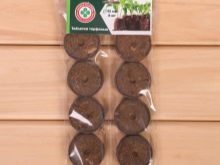
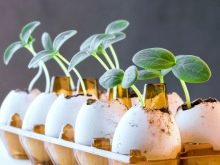
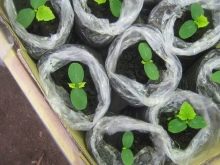
Sowing seeds
Most gardeners prefer to grow cucumber seedlings at home in separate small containers, but some plant them in a common container. The landing pattern in both cases is similar, with the exception of a small adjustment.
- Prepared containers are disinfected before sowing.To do this, they are poured with a hot solution of potassium permanganate and allowed to stand for 5-10 minutes, then the manganese is drained. Peat containers are not processed.
- To exclude decay of the roots, holes are made at the bottom of the cups.
- For the same purpose, a drainage layer in the form of sand and peat is laid on the bottom of the tanks.
- Then the prepared soil is poured into glasses or into a common container, not reaching the edges by 1/3.
- The earth is moistened.
- Seeds are spread on moist soil in several pieces in one glass. Later, when the seedlings sprout, a stronger specimen is selected, and the weak one is removed with scissors under the very root. You cannot pull it out, the main sprout may suffer. In shared containers, the seeds are placed on a damp surface in 7-10 cm increments. If planted too close, the seedlings will stretch out and be weak.
- The laid out seeds are slightly pressed down so that they are fixed in moist soil and do not move when sprinkling with earth.
- Then the containers are carefully covered with nutritious soil 2-2.5 cm over the seeds.
- Seedlings are well moistened with a spray bottle.
- The containers are covered with food or ordinary plastic wrap.
- Seedlings are removed to a warm place (+ 20 ... 24 degrees) before germination. Monitor soil moisture.


Care
Seedling containers should be ventilated daily to remove condensation from the film. Start with 15 minutes and increase this time every day. It is necessary to monitor the condition of the soil, but, as a rule, it will be wet under the film, and watering is not required. When the first shoots appear, the film should be removed so as not to interfere with the normal growth of the seedlings.
- Lighting... The seeds do not need lighting, but the sprouts need it. Lack of light will cause the seedlings to stretch out and become thin and frail. Therefore, after removing the film, the seedlings are transferred to a windowsill, preferably located on the south, south-east or south-west side. Seedlings should receive lighting up to 14 hours a day. If there is not enough natural light, you need to install artificial lamps with phytolamps or fluorescent light.
- Temperature... The seeds germinate in the warmth (up to +25 degrees), and the sprouts do not need a high temperature, they will need a maximum of + 18 ... 20 degrees. In this state of air, greens slow down their growth, allowing the root system to develop. During the growing up of seedlings, it is important to protect it from drafts. A week before planting in open ground, containers are taken outside, for example, on a balcony, in order to gradually accustom the seedlings to a low temperature (hardening method).
- Watering... Moistening the soil is necessary for a young plant, its condition is monitored daily. Do not overfill containers, this will lead to rotting of the roots. During watering, you do not need to direct a direct stream of water to the leaves of the plant, try to get under the root. Once every 3 days, the greens themselves can be irrigated from a spray bottle, the diffused stream of moisture will not harm it. For irrigation, use warm, settled water.
- Top dressing... Top dressing is done once, during the period when two well-defined leaves appear on the seedlings. 7-8 hours before the procedure, the soil should be moistened, since the introduction of fertilizers into dry soil threatens to damage the roots. The composition is prepared as follows - 20 g of nitrate, 20 g of superphosphate and 15 g of potassium sulphide are added to 10 liters of water.
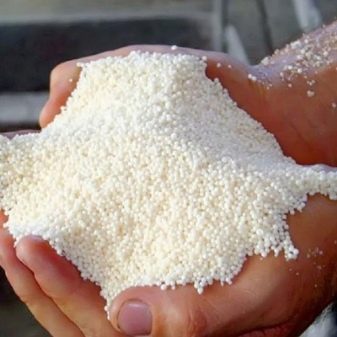
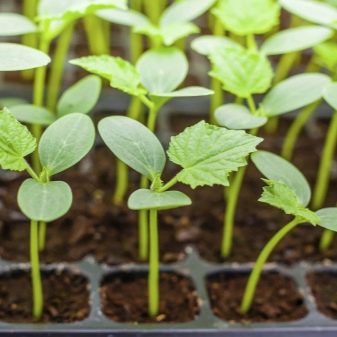













The comment was sent successfully.